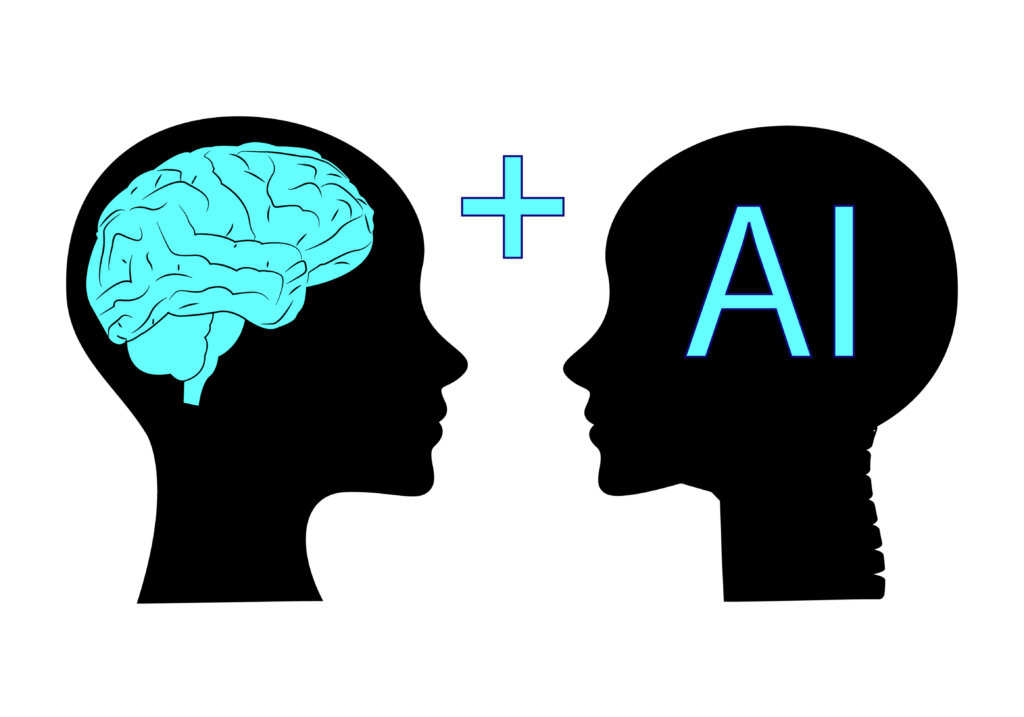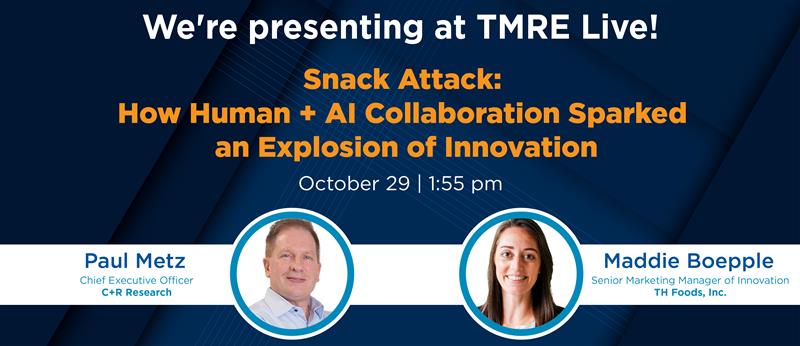
Segmentation to Sell-In: Lessons from AI-Driven Product Innovation
Filed Under: Shopper, CPG, Food & Beverage, Grocery, Retail, Shopper Insights, AI Solutions, Artificial Intelligence (AI), Concept Testing, Ideation
Paul Metz
Chief Executive Officer, C+R Research
Competition for shopper attention is fierce, and brands must find smarter ways to generate ideas that resonate with both consumers and retailers. Harnessing the latest advancements in artificial intelligence, our team embarked on a groundbreaking approach to product innovation: leveraging AI-driven shopper personas to supercharge ideation, validation, and sell-in strategies. This article explores how blending robust segmentation data, multi-source research, and a suite of advanced AI tools transformed the way new crunchy snack concepts were generated, refined, and brought to life—offering valuable lessons for anyone seeking to accelerate innovation with both speed and authenticity.
What We Did
To help our client rapidly generate new crunchy snack ideas for some of their key retailers, we designed an innovation program centered on AI-driven shopper personas. These personas were created from C+R’s proprietary segmentation research and further customized using fresh qualitative interviews with actual shoppers and sales reps. We integrated insights from over 20 industry trend reports and also direct input from sales teams to enrich the personas’ knowledge and relevance.
During structured ideation sessions, we used 11 tailored AI personas—each representing distinct shopper segments most aligned with the target retailers—to respond to over 30 creative prompts covering flavors, textures, health benefits, and more. In just a few hours, this approach generated nearly 900 snack ideas.
We then organized and prioritized these ideas using AI tools and expert personas, followed by a collaborative workshop with the client to select the top concepts. These finalists were tested with real shoppers through an online survey, and the highest-potential ideas were further developed into sales-ready concepts, complete with claims and imagery. Throughout, AI personas provided feedback and simulated retailer reactions, helping refine the final sell-in materials.
What Made This Approach Compelling & Effective
1. Use of AI Personas Built on Segmentation Data
The project leveraged pre-developed AI shopper personas, grounded in real segmentation research. Several of the shopper segments over-index on shopping at the client’s key retail partners. This approach ensured ideation was rooted in authentic shopper attitudes and values, making the output highly relevant to the target retailers.
2. Multi-Source Data Integration
The process combined qualitative research, trend reports, and direct input from sales reps. This triangulation of data sources into the AI persona platform enriched the ideation process, helping to ensure that the ideas developed were not only creative but also feasible and on-trend.
3. Rapid, High-Volume Ideation
Nearly 900 ideas were generated in just a few hours using AI personas. This scale and speed are game-changing compared to traditional brainstorming sessions. For innovation managers, this means more options to explore and a higher likelihood of uncovering breakthrough ideas, while also saving time and resources.
4. Structured Funnel for Concept Selection
The project used AI and human experts to sort, rate, and prioritize ideas, followed by an in-person facilitated workshop to select concepts for consumer testing. This structured approach helped manage the “idea overload” that comes with AI ideation and ensured that only the most promising concepts moved forward.
5. AI-Assisted Concept Development and Sell-In Preparation
AI was used to flesh out concepts, develop claims, and even generate product images and sales sheets. The use of separate AI personas for sell-in feedback is particularly innovative, simulating retailer reactions before actual pitches and ensuring that our client’s account reps were as equipped as possible to have successful conversations.
6. Validation with Real Consumers
Despite the heavy use of AI, the process included a concept test with actual shoppers, providing a reality check and validation for the ideas. This hybrid approach—AI for ideation, humans for validation—strikes a balance between speed and authenticity.

What We Learned
AI is fast, sure. However, changing the process required additional time.
Integrating AI into legacy innovation processes requires thoughtful planning. While AI generates ideas quickly and in large numbers, substantial time is still needed for preparation and post-ideation tasks. Optimizing AI shopper personas and conducting qualitative research extend project timelines. Additionally, sorting through hundreds of ideas demands a realistic timeline.
AI without rich human + category specific data falls flat
While anyone can prompt an LLM to generate ideas from a consumer’s perspective for a specific retailer, this shortcut rarely yields authentic, nuanced concepts that truly resonate. Effective ideation starts with AI personas deeply informed by real human insights and language, supplemented by current, detailed category trend data that often isn’t publicly accessible.
The value of multiple LLMs: not all LLMs are equally capable of the same tasks
Throughout the project, we experimented with five different AI tools—including Microsoft Copilot, Perplexity, Midjourney, Outset, and our custom personas hosted by AIBods—discovering that each excels in different areas. For instance, the AI we initially chose for concept images underperformed, leading us to successfully switch platforms. The key takeaway: don’t rely solely on one AI tool; flexibility leads to better results.
The value of multiple types of AI personas in the innovation process
We developed several AI personas using AIBods. First, we created AI shopper personas aligned with six proprietary attitudinal segments from our SmartMarket™ Shopper Segmentation and refined them with retailer- and category-specific qualitative data. We also built an “Expert Researcher” persona, which combined insights from segmentation research, qualitative studies, and more than two dozen industry and trend reports, serving as a research librarian and category expert. Additionally, we added two corporate buyer personas for the snacks category to act as a sounding board and sell-in coach. Sure, you can use AI just for simple ideation. But why stop there? AI personas can play multiple, complementary roles throughout the innovation process, not just in ideation.
AI watchout: Sycophancy is real
Ultimately, we learned that our AI corporate buyer personas were a little too “agreeable” during simulated sell-in conversations. This may have been a limitation of our development process, which rested exclusively on in-depth interviews with our clients’ sales reps. In retrospect, we could have trained these specialized chatbots to exhibit a more judgmental or skeptical nature, which would require extra convincing when reviewing new products. Until we develop an effective method for constructing these types of AI personas, acceptance testing will likely remain a role for human subjects.
In Conclusion
Integrating AI personas into the innovation process isn’t about replacing human creativity—it’s about amplifying it. When grounded in authentic shopper insights and enriched with category-specific data, AI becomes a powerful partner that helps teams generate ideas at scale, refine them with precision, and validate them with confidence. The lesson is clear: the future of product innovation belongs to those who embrace a hybrid approach—where human expertise and AI collaboration come together to deliver consumer-centric concepts that truly resonate.
explore featured
Case studies


